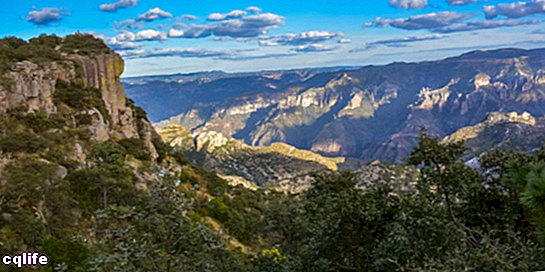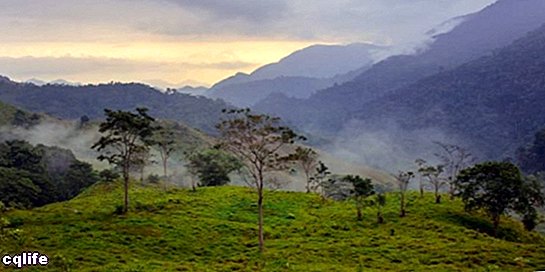We explain what a mountain range is, its characteristics, differences with mountain ranges and examples of mountain ranges around the world.

What is a saw?
A sierra or mountainous area is a set of moutains whose summits present a broken or serrated appearance (hence its name, due to its resemblance to the instrument), and which are part of another larger set of mountains, such as a mountain range.
Saws are usually longer than they are tall. They can extend for hundreds of kilometers, giving rise at the same time to massifs and other types of orographic formations.
The word "sierra" comes from Latin serra, and in some countries it tends to give rise to derivatives, such as “serranía”, sometimes used for larger mountain ranges, or “serrezuela” for smaller ones. Likewise, the individuals that inhabit the mountains are often called “serranos”.
Sierra and mountain range

Cordilleras are mountainous groups much more complex than mountain ranges, to the point that the latter are usually always inserted in a mountain range. However, there are notable structural differences between the two: the mountain ranges tend to be longer and narrower, also reaching lower heights and therefore having less geographic importance.
In fact, the valleys that can be found in a sierra tend to be much smaller than those of an ordinary mountain range. On the other hand, the mountain ranges can reach enormous heights, extend for thousands of kilometers and constitute formations much more imposing than the mountain ranges.
Examples of saws

The main mountains and mountainous areas of the world are:
- The Sierra Madre Oriental. Of approximately 1,350 kilometers of length and oriented in a northwest-southwest direction, it is located in Mexican territory from the Rio Grande to the neovolcanic axis, crossing the states of Coahuila, Nueva León, Tamaulipas, Texas, San Luis Potosí, Hidalgo, Puebla, Querétaro, Tlaxcala and Veracruz.
- The Sierra Madre Occidental. Another Mexican mountain chain, which covers the entire west of its territory and ascends towards the United States, is 1,500 kilometers long and an average width of 150 km, crossing the territory of the states of Arizona, Chihuahua, Sonora, Sinaloa, Durango , Aguascalientes, Zacatecas, Jalisco, Nayarit and later joining the Mexican Transversal Volcanic Axis.
- The Sierra Madre del Sur. Stretching over 1,200 kilometers, the southern Mexican highlands is located between the states of Jalisco and Oaxaca, running parallel to the Pacific Ocean and the Neovolcanic Axis. Owns a altitude an average of 2,000 meters above sea level and it is a place of enormous biodiversity.
- The Sierra Nevada de Santa Marta. Located in the north of Colombia, in an isolated system of the Andes, this mountain range rises from the Caribbean Sea to reach heights close to 5,700 masl, its highest point being the Pico Cristóbal Colón. It is the highest coastal mountain system in the world.
- The Sierra Nevada de Mérida. Located between the states of Mérida and Barinas, in western Venezuela, it is part of the National Park of the same name, founded in 1952. It has important heights, such as those of Pico Bolívar, Pico Humboldt and Pico Bonpland, the highest in the country. and until 2018 it had important glacial reserves (around 10 km2) at its summits, but the global warming it has reduced them to less than 0.1 km2 today.
- The Sierra Morena. Located in the south of Spain and reaching 400 km in length, it constitutes a natural geographical border between Andalusia and Castile, and has an important presence in the local culture, as the setting for some chapters of the famous novel by Miguel de Cervantes, Don Quixote de la Mancha.
- The Sierras of Córdoba. Located in the Argentine province of Córdoba, on the border with the province of San Luis, in the center of the nationThey are mountainous formations of medium height, whose highest peak reaches 2,884 meters above sea level (Cerro Champaquí). They are an important tourist spot in the region and constitute the southern end of the Sierras Pampeanas.
- The Sierras Pampeanas. With an approximate area of 300,000 km2 in the northwest of the Argentine nation, it includes a set of mountain ranges, plateaus and peneplains that cross almost seven provinces: Tucumán, Catamarca, La Rioja, Santiago del Estero, San Juan, Córdoba and San Luis. Its maximum height corresponds to the Cerro General Belgrano, which is located at 6250 meters above sea level.
